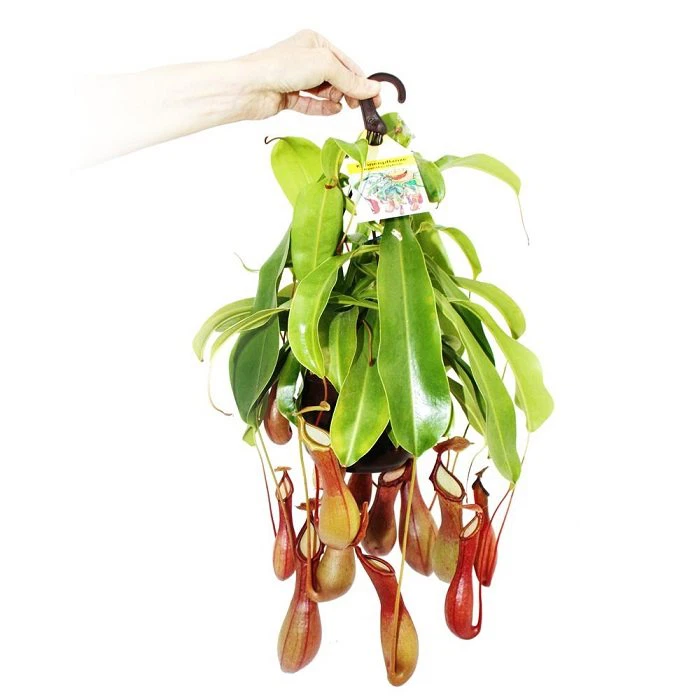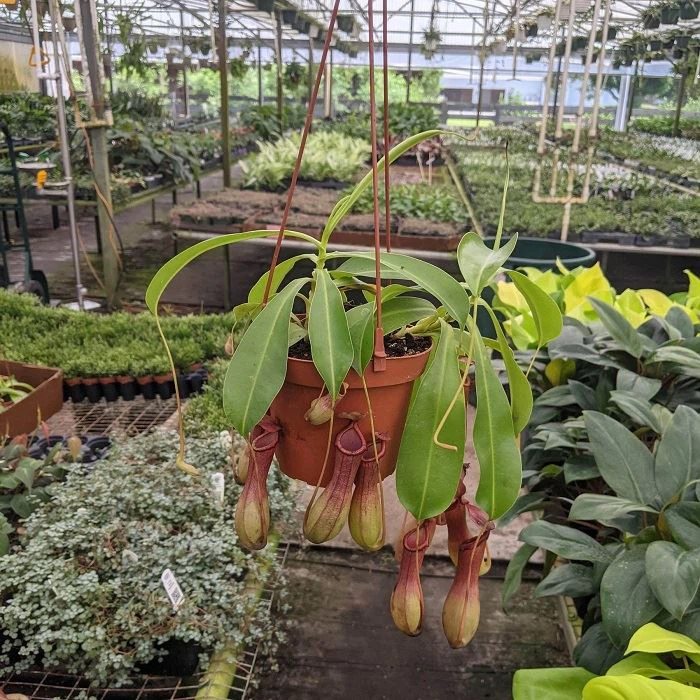Carnivorous Nepenthes
If there is a royalty among carnivorous plants, that distinction surely lies with the Nepenthes. Tropical pitcher plants have a rich botanical and horticultural history and the plants themselves are a virtual ecosystem of give-and-take with nature.
Product Details
Plant Features
If there is a royalty among carnivorous plants, that distinction surely lies with the Nepenthes. Tropical pitcher plants have a rich botanical and horticultural history and the plants themselves are a virtual ecosystem of give-and-take with nature. The genus has the only species known to have devoured whole rats! And they are hauntingly beautiful; their pitcher traps often as elaborate and gaudy as artistic creations by humankind.
Nepenthes usually grow as climbing or scrambling vines. Most species are found in Southeast Asia, their center of distribution being the island of Borneo. Nepenthes are not typically jungle plants, but prefer more open and sunny ridges, slopes and stunted forests.
Species that grow below 3,000 feet are considered lowland. They experience hot days, warm nights, and continuous high humidity. Seventy percent of Nepenthes are tropical highland or mountain plants, growing at elevations of 3,000 to 10,000 feet above sea level. Above the lowland heat of the rainforest, the mountain climate can be considerably cooler and wetter, especially at night.
Growing Instructions
Sun: Most Nepenthes enjoy very bright, diffused light or partly sunny conditions. Many can be grown easily on a sunny windowsill. Terrariums with high-powered fluorescent lights are easy to set up and ideal; we recommend four T-5 lights.
Water: In greenhouses avoid the tray method of watering entirely and place the containers on benches or hang them so water can freely drain away. In terrariums and on windowsills, place the pot in a shallow saucer and water overhead as soon as the water in the saucer evaporates. Don't allow the pot to sit in deep water for extended periods of time as this can lead to root rot. All pots must have drainage holes!
Temperature: All Nepenthes are tropical plants, roughly divided into lowlanders and highlanders.
Lowlanders come from low elevations in tropical Southeast Asia. Constant temperatures in 80's with high humidity is ideal, although some species will grow on sunny windowsills in warm homes. They are not tolerant of low temperatures.
Highlanders do best with day temps in the 70's and 80's. They require a night time drop in temperature of about 10-20 degrees in order to thrive. Most highlanders can be easily grown on sunny windowsills. They can be damaged or killed by temperature below the low 40s.
Here is a very handy guide to Nepenthes temperature range by species: The Nepenthes Guide
Dormancy: No dormancy period needed.
Soil: Nepenthes enjoy loose, open soil that remains wet to moist but allows drainage of excess water. They are tolerant of a wide variety of soil mixes. The best are about three parts New Zealand long-fibered Sphagnum moss to one part of some combination of coarse materials, such as perlite, orchid bark, pumice, tree-fern fiber, lava rock or charcoal.
Fertilizer/Feeding: MaxSea fertilizer can also be applied, once per month, to the leaves and pitchers of the plant. Avoid pouring through the soil. Osmocote 16-16-16 fertilizer pellets are also a wonderful addition to your fertilizer routine. Put one pellet into each new pitcher as it opens.
Special Care
| Light Indoors: High light | Colors Green, Red | ||
Water Low water needs | Special Features Colorful foliage Purifies the air Super-easy to grow |
Hot Tags: carnivorous nepenthes, suppliers, wholesale, farm, nursery
Send Inquiry






